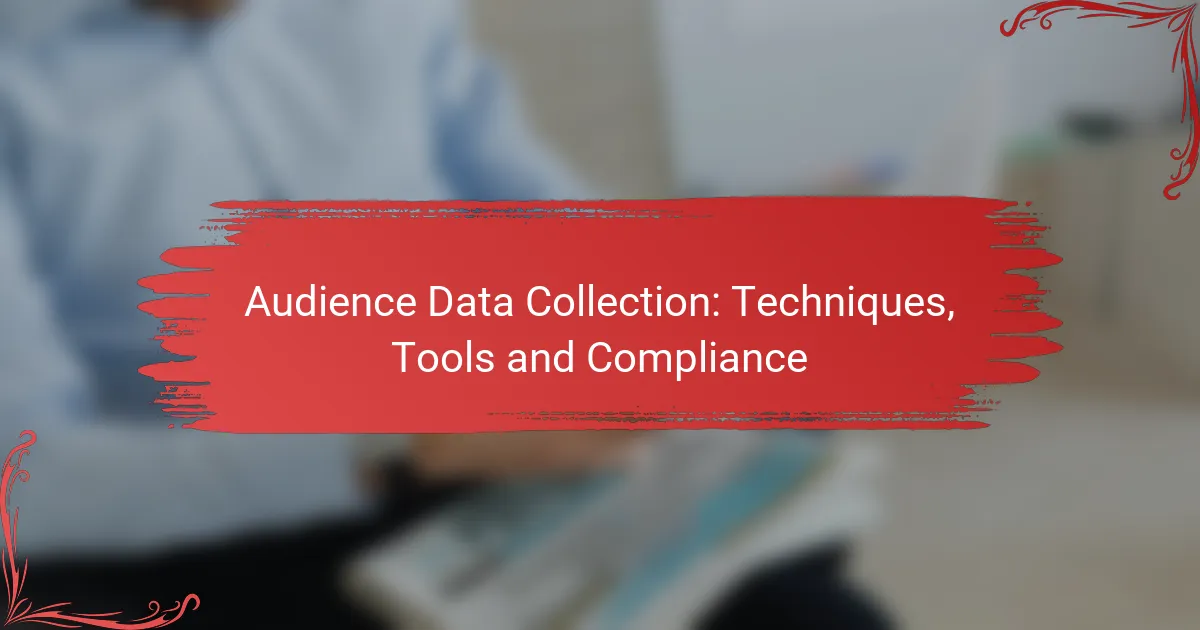Audience data collection is essential for understanding user preferences, behaviors, and demographics, employing both qualitative and quantitative techniques to enhance engagement. Utilizing effective tools that offer analytics and reporting features can empower businesses to make informed decisions based on user insights. Additionally, compliance with regulations like GDPR and CCPA is crucial, necessitating adherence to best practices that safeguard user privacy and ensure transparency in data handling.
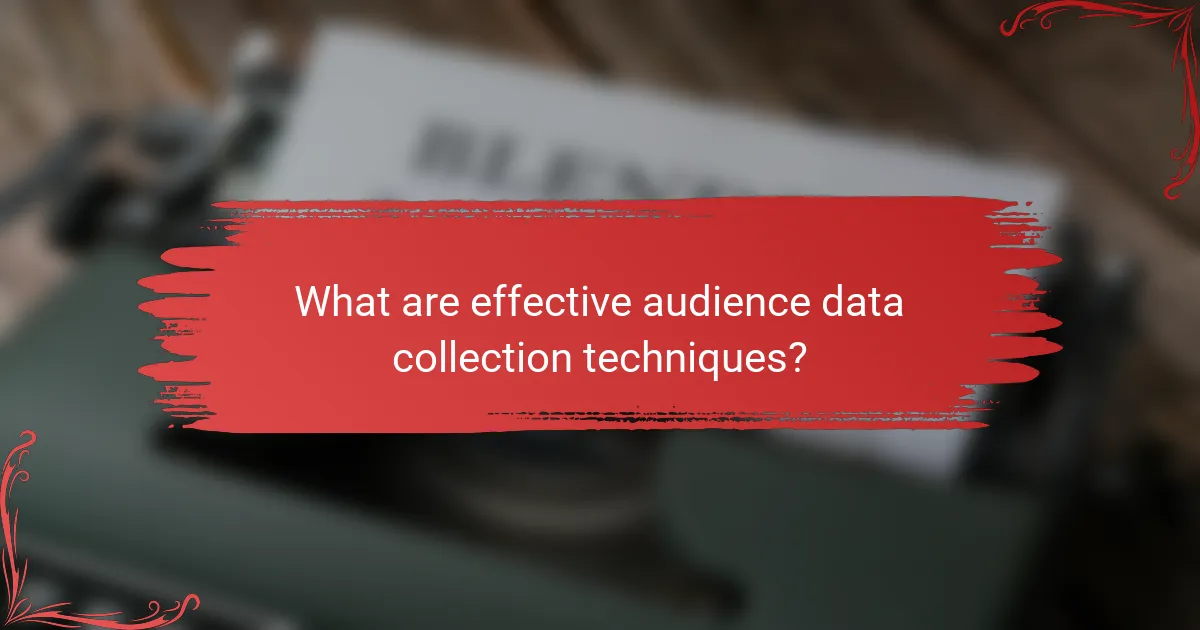
What are effective audience data collection techniques?
Effective audience data collection techniques include methods that gather insights about user preferences, behaviors, and demographics. Utilizing a mix of qualitative and quantitative approaches can enhance understanding and engagement with your target audience.
Surveys and questionnaires
Surveys and questionnaires are direct methods for collecting audience data, allowing you to ask specific questions to gain insights. They can be distributed online or in-person, often yielding high response rates when incentivized.
To maximize effectiveness, keep surveys concise and focused, ideally taking no more than 5-10 minutes to complete. Use a mix of multiple-choice and open-ended questions to gather both quantitative and qualitative data.
Web analytics tools
Web analytics tools track user interactions on your website, providing valuable data on visitor behavior, traffic sources, and conversion rates. Popular tools like Google Analytics can help you understand which pages attract the most visitors and how users navigate your site.
Consider setting up goals and events to measure specific actions, such as form submissions or product purchases. Regularly review this data to identify trends and optimize your website for better user experience.
Social media monitoring
Social media monitoring involves tracking mentions, comments, and interactions across various platforms to understand audience sentiment and preferences. Tools like Hootsuite or Brandwatch can help you analyze engagement and identify key influencers in your niche.
Engage with your audience by responding to comments and messages, and use insights gained to tailor your content strategy. Regularly assess which platforms yield the most engagement to focus your efforts effectively.
Customer feedback forms
Customer feedback forms are essential for gathering insights directly from users about their experiences with your products or services. These can be integrated into your website or sent via email after a purchase.
To encourage participation, keep forms short and offer incentives, such as discounts or entry into a prize draw. Analyze the feedback to identify common issues or areas for improvement, and communicate changes made based on customer input to build trust.
Behavioral tracking
Behavioral tracking involves monitoring user actions on your website or app to gather data on how they interact with your content. This can include click tracking, heatmaps, and session recordings to visualize user journeys.
Implementing tools like Hotjar or Crazy Egg can provide insights into user engagement patterns. Use this data to refine your design and content strategy, ensuring a more intuitive user experience that meets audience needs.
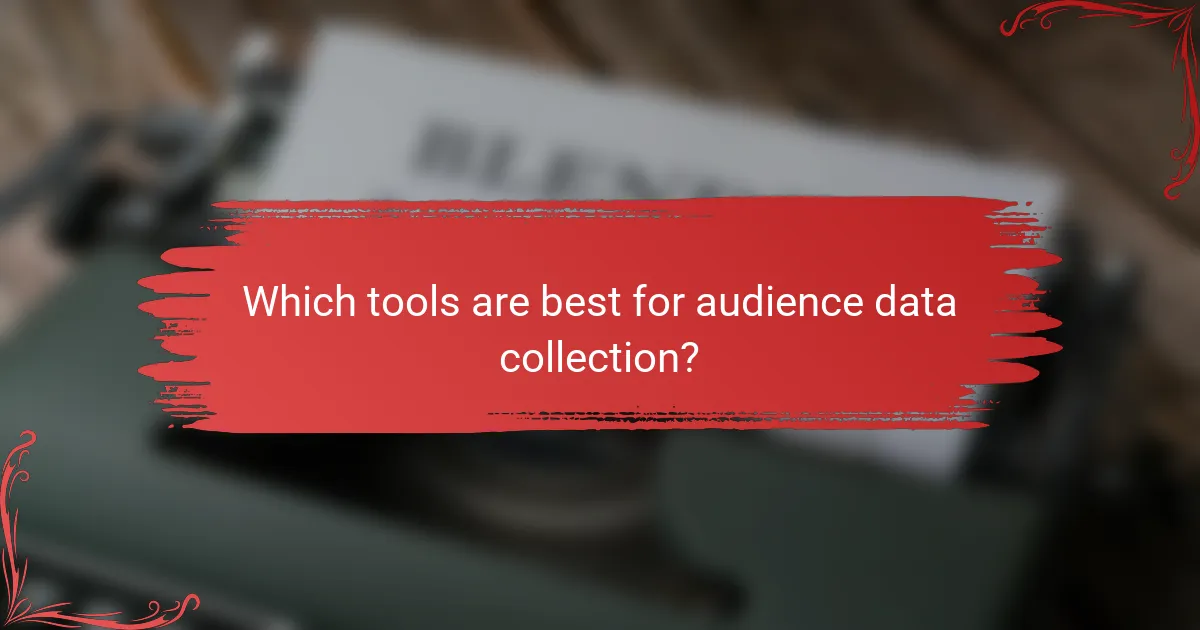
Which tools are best for audience data collection?
Effective audience data collection relies on various tools that provide insights into user behavior and preferences. The best tools not only gather data but also offer analytics and reporting features to help businesses make informed decisions.
Google Analytics
Google Analytics is a powerful tool for tracking website traffic and user engagement. It provides detailed reports on user demographics, behavior, and acquisition channels, allowing businesses to understand their audience better.
To get started, set up a Google Analytics account and integrate it with your website. Focus on key metrics like session duration, bounce rate, and conversion rates to gauge audience engagement effectively.
Hotjar
Hotjar specializes in visualizing user behavior through heatmaps and session recordings. This tool helps businesses see where users click, scroll, and spend time on their site, providing insights into user experience.
Implement Hotjar by adding its tracking code to your site. Use the data to identify areas for improvement, such as optimizing page layouts or enhancing content engagement.
SurveyMonkey
SurveyMonkey is an online survey tool that allows businesses to collect feedback directly from their audience. It offers customizable templates and analytics features to analyze responses effectively.
Create surveys to gauge customer satisfaction or gather opinions on new products. Keep surveys concise to encourage participation and consider incentivizing responses to increase engagement.
HubSpot
HubSpot is an all-in-one marketing platform that includes audience data collection tools such as forms, email tracking, and CRM integration. It helps businesses manage leads and analyze customer interactions.
Utilize HubSpot’s forms to capture visitor information and segment your audience for targeted marketing. Regularly review the analytics dashboard to track engagement and optimize your strategies.
Tableau
Tableau is a data visualization tool that helps businesses analyze and present audience data in an understandable format. It allows users to create interactive dashboards and reports from various data sources.
Connect Tableau to your data sources, such as Google Analytics or CRM systems, to visualize trends and patterns. Use these insights to make data-driven decisions and enhance audience engagement strategies.
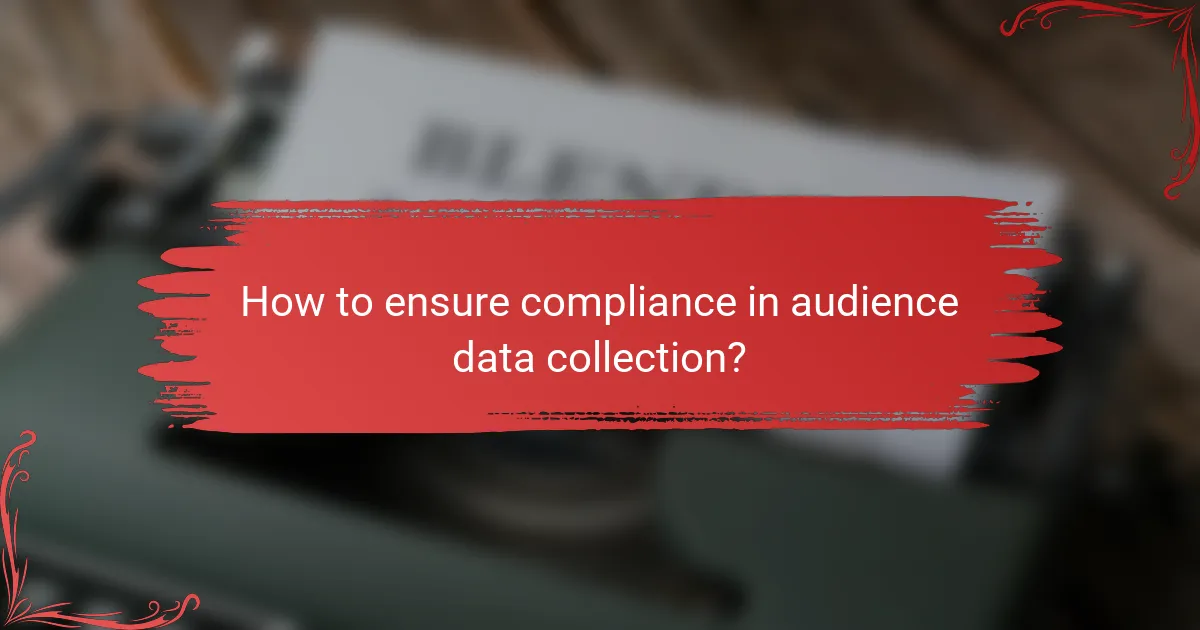
How to ensure compliance in audience data collection?
Ensuring compliance in audience data collection involves adhering to relevant regulations and implementing best practices that protect user privacy. Organizations must familiarize themselves with laws such as GDPR and CCPA, utilize data anonymization techniques, and maintain transparency in their privacy policies.
Understanding GDPR regulations
The General Data Protection Regulation (GDPR) is a comprehensive data protection law in the European Union that mandates strict guidelines for data collection and processing. Organizations must obtain explicit consent from users before collecting personal data and provide clear information on how that data will be used.
To comply with GDPR, businesses should implement data protection measures, conduct regular audits, and appoint a Data Protection Officer (DPO) if necessary. Non-compliance can result in hefty fines, often reaching up to 4% of annual global revenue or €20 million, whichever is higher.
Implementing CCPA guidelines
The California Consumer Privacy Act (CCPA) grants California residents specific rights regarding their personal data, including the right to know what data is collected and the right to request deletion. Companies must inform users about their data collection practices and provide an opt-out option for the sale of their information.
To ensure compliance with CCPA, businesses should update their privacy policies, implement mechanisms for users to exercise their rights, and train employees on data handling practices. Failing to comply can lead to fines of up to $7,500 per violation.
Data anonymization techniques
Data anonymization involves altering personal data so that individuals cannot be identified, thus reducing privacy risks. Techniques include data masking, aggregation, and differential privacy, which can help organizations comply with regulations while still utilizing valuable insights from data.
When implementing anonymization, businesses should consider the balance between data utility and privacy. Regularly reviewing and updating anonymization methods is crucial to adapt to evolving regulations and technological advancements.
Privacy policy transparency
Transparency in privacy policies is essential for building trust with users and ensuring compliance with data protection laws. Organizations should clearly outline what data is collected, how it is used, and the rights users have regarding their data.
To enhance transparency, businesses can use plain language in their privacy policies, provide easily accessible information, and regularly update policies to reflect changes in data practices. Engaging users through clear communication can significantly improve compliance and foster a positive relationship with customers.
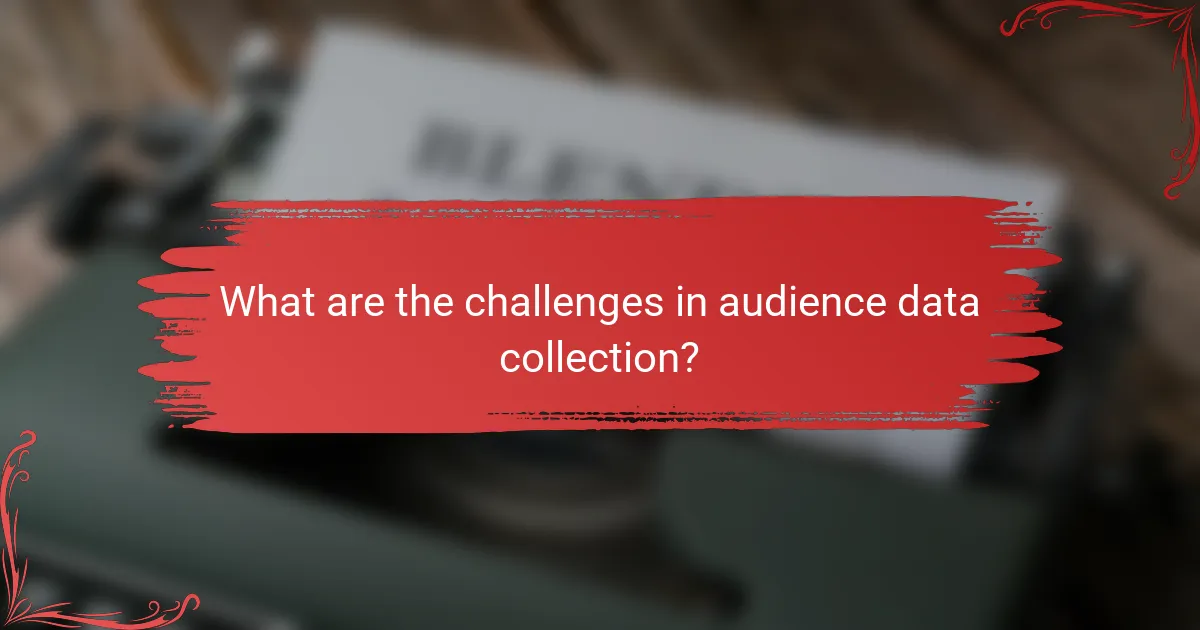
What are the challenges in audience data collection?
Audience data collection faces several challenges, primarily revolving around data privacy, compliance with regulations, and the accuracy of the data gathered. Organizations must navigate these complexities to effectively gather insights while respecting user rights and maintaining trust.
Data privacy concerns
Data privacy concerns are a significant challenge in audience data collection, as individuals increasingly prioritize their personal information security. Organizations must ensure that they collect, store, and process data in compliance with regulations such as the General Data Protection Regulation (GDPR) in Europe or the California Consumer Privacy Act (CCPA) in the United States.
To address these concerns, businesses should implement transparent data collection practices, clearly informing users about what data is collected and how it will be used. Employing techniques such as anonymization and encryption can further protect user data and enhance privacy.
Additionally, organizations should regularly review their data collection methods and privacy policies to adapt to changing regulations and public expectations. This proactive approach not only mitigates risks but also fosters trust with the audience, which is essential for successful data collection efforts.
